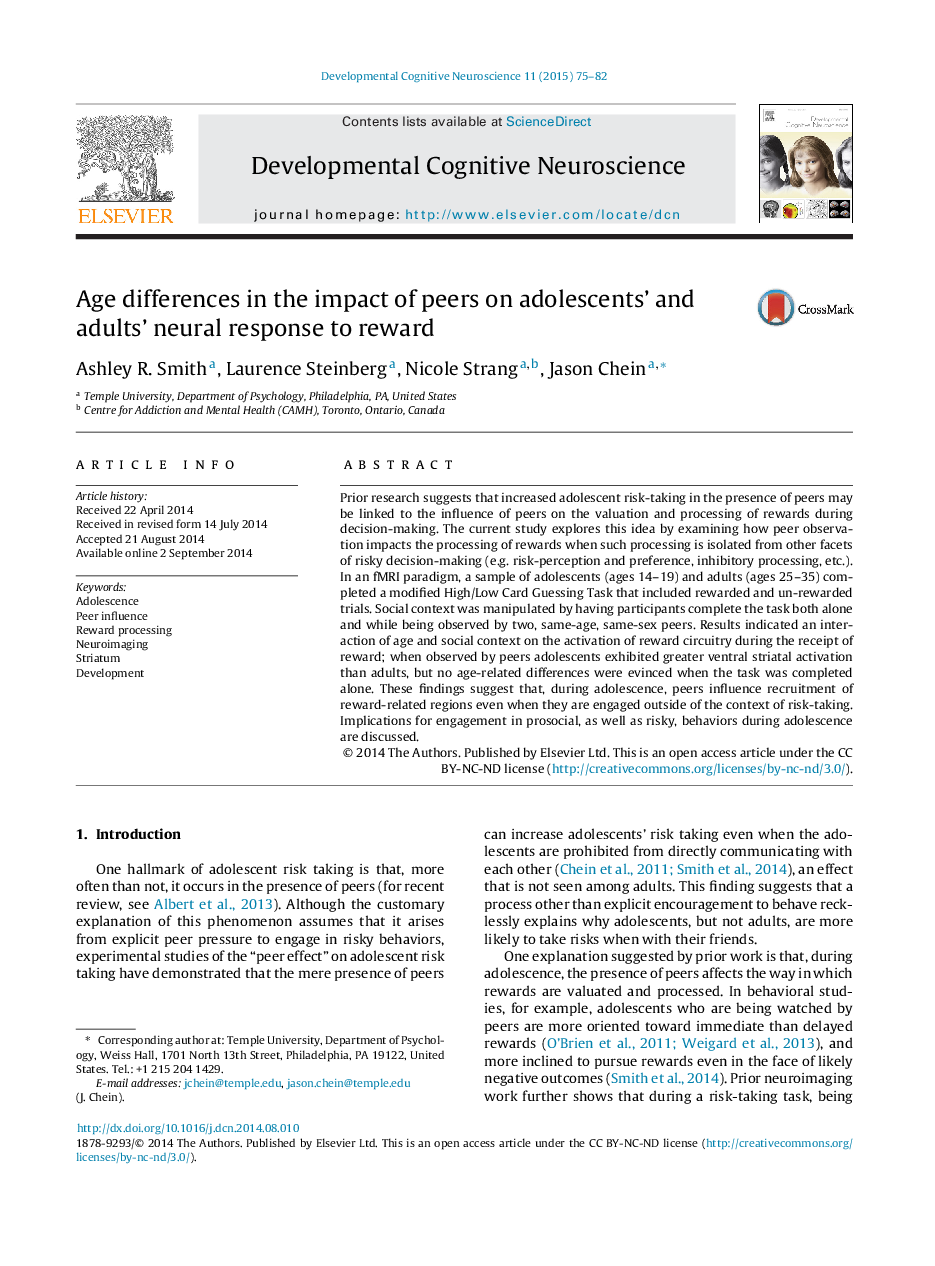| Article ID | Journal | Published Year | Pages | File Type |
|---|---|---|---|---|
| 4316573 | Developmental Cognitive Neuroscience | 2015 | 8 Pages |
•The effect of peers on brain activity during reward processing is examined.•Peers increase adolescents’ striatal activation during receipt of rewards.•Adults’ striatal response to receipt of reward is not dependent on social context.•Peer influence on adolescents’ reward sensitivity is not limited to risk-taking.
Prior research suggests that increased adolescent risk-taking in the presence of peers may be linked to the influence of peers on the valuation and processing of rewards during decision-making. The current study explores this idea by examining how peer observation impacts the processing of rewards when such processing is isolated from other facets of risky decision-making (e.g. risk-perception and preference, inhibitory processing, etc.). In an fMRI paradigm, a sample of adolescents (ages 14–19) and adults (ages 25–35) completed a modified High/Low Card Guessing Task that included rewarded and un-rewarded trials. Social context was manipulated by having participants complete the task both alone and while being observed by two, same-age, same-sex peers. Results indicated an interaction of age and social context on the activation of reward circuitry during the receipt of reward; when observed by peers adolescents exhibited greater ventral striatal activation than adults, but no age-related differences were evinced when the task was completed alone. These findings suggest that, during adolescence, peers influence recruitment of reward-related regions even when they are engaged outside of the context of risk-taking. Implications for engagement in prosocial, as well as risky, behaviors during adolescence are discussed.
